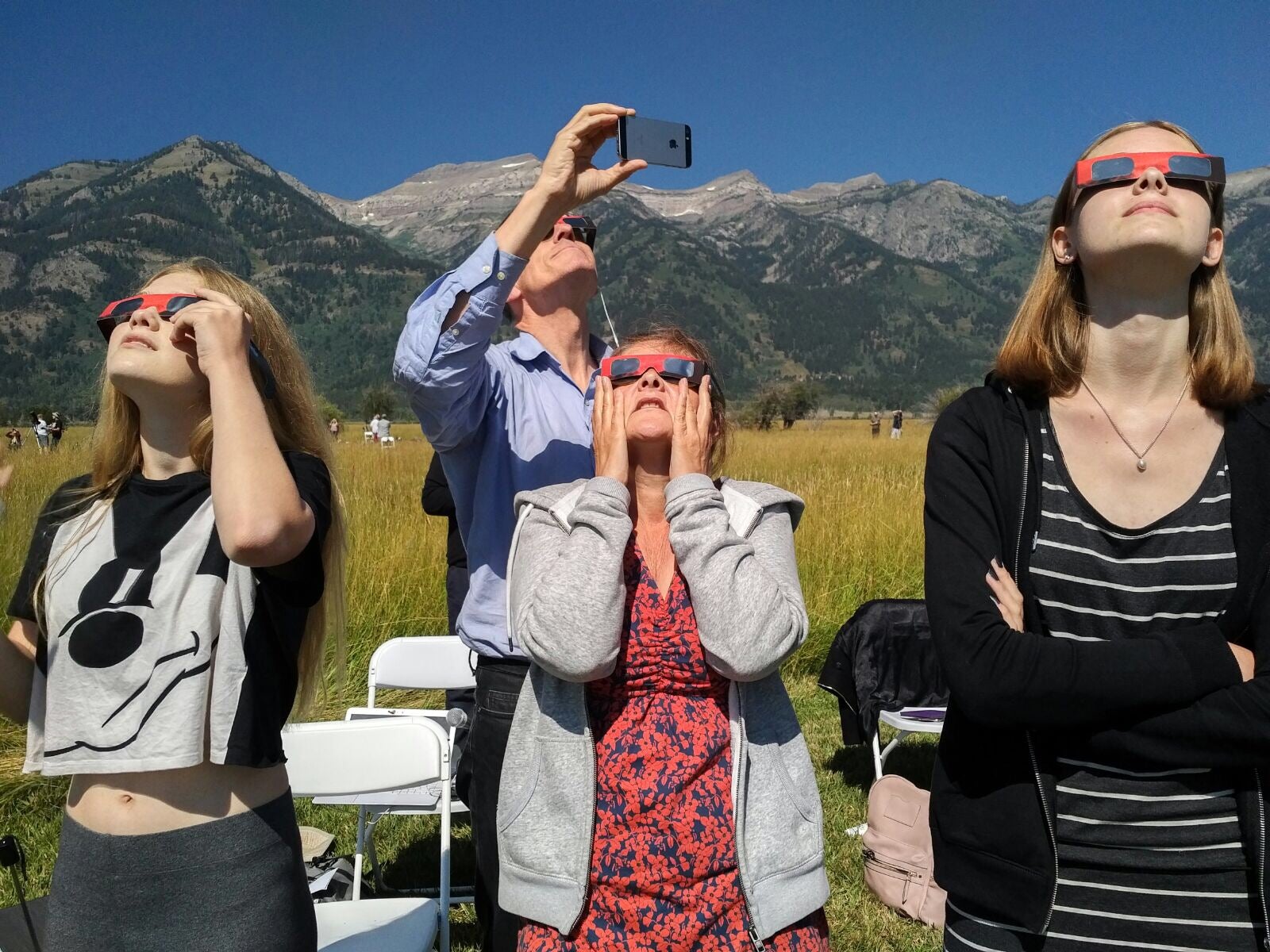‘All or nothing’ opportunity as astronomer urges viewers not to make do with a partial eclipse
Exclusive: You can’t observe all the wonders of totality unless you’ve got 100 per cent, says Dr John Mason

The US is preparing to witness a total solar eclipse of intense drama.
On Monday 8 April the moon will blot out the sun for over four minutes as a 115-mile-wide “zone of totality” sweeps across North America from Mexico’s Pacific Coast to Atlantic Canada.
Millions of people live in cities just outside the zone, such as Cincinnati and much of San Antonio, while Boston, New York and Chicago will see a sizeable chunk of the sun blotted out.
But the UK’s eclipse guru, Dr John Mason has warned prospective viewers to choose their location with care.
Speaking on The Independent’s daily travel podcast, the astronomer said: “Even when the sun is 99 per cent eclipsed, that 1 per cent is incredibly bright and gives out a lot of light.
“You can’t observe all the wonders of totality unless you’ve got 100 per cent.
“The worst thing you can do is go somewhere that’s outside the zone of totality and then have to travel in – and find there’s a staggering traffic jam and you can’t get into the zone.”
The last great eclipse in the US was in 2017. Dr Mason, 69, said: “There were a lot of people who thought it was going to be ‘total’ in Yellowstone Park. It wasn’t.
“They got to Yellowstone Park that morning and said, ‘Oh, it’s not going to be total’. So there was an enormous tailback of camper vans heading south of Yellowstone Park to get into the zone of totality.
“I suspect we shall see similar things this time. You’ve got places such as Cincinnati and Columbus in Ohio – just outside the south limit. If all of those people try and head northwest to get into the zone of totality, then there’s going to be a lot of traffic jams.”
Millions of people are expected to gather in US cities within the zone of totality, such as Indianapolis, Cleveland and Buffalo, while hordes of Texans from San Antonio, Austin and Dallas are likely to drive from their homes on the edge of the total eclipse zone to the centre line.
“There’s a lot of unknowns, and one has no idea how many people will travel or what the roads will be like.”
Dr Mason is leading a tour of more than 100 eclipse chasers. Their base will be in San Antonio, Texas, but on 8 April they will be rising early to travel towards the Mexican border and a ranch that they have booked for exclusive use.
“I’m going to be right up against the border down in Eagle Pass. And I’m hoping that I’m going to get good weather.”
When deciding where to lead his eclipse disciples, Dr Mason studies decades of weather records to maximise the chances of clear skies. But, he warns: “The statistics for the weather are only a guide.
“On the day, it could be totally different. You could find that there could be a cloudy day in Texas, and it could be clear up in the Northeast, in Maine. It’s only a guide.”
“There’s generally going to be better weather down in the southwest, deteriorating slowly as you go towards the Northeast.
“But local weather conditions can make a huge difference. For example, Cleveland, Ohio, which is a really good place to view the eclipse from, has far better weather prospects than Indianapolis by quite a margin. Even Rochester, New York state, has got very good weather prospects.”
The location Dr Mason believes could attract the most viewers: Niagara Fall, on the US-Canada border.
“I could imagine huge numbers of people making their way to Niagara Falls because it’s got its cachet of an amazing view and and the total eclipse as well.”
Normally cheap motel rooms on the Canadian side of the falls are selling for a minimum of C$600 (£350) for the night before the eclipse, and the morning train from Toronto to Niagara on the day is completely sold out.
For anyone who misses the 8 April 2024 total solar eclipse, the next will be on 12 August 2026, with northern Spain and the Balearic islands in the zone of totality.
Subscribe to Independent Premium to bookmark this article
Want to bookmark your favourite articles and stories to read or reference later? Start your Independent Premium subscription today.

Join our commenting forum
Join thought-provoking conversations, follow other Independent readers and see their replies